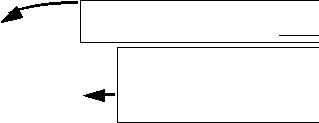
e compositedesignsfor fitting second-ordermodelsin k factorsall contain
be portionsof resolutionat leastV, plus axial points,plus centerpoints. Of
Of
urse there must be at least 1/2(k + 1)(k + 2) points in the design, this being th
mber of coefficients to estimate.
Hartley (1959) pointed out that the cube
rtion of the composite design need not be of resolution V.
resolution as low as III, provided that two-factor interactions were not aliased
h two-factor interactions.
(Two-factor interactions could be aliased with main
ects, because the star portion provides additional information on the main
This idea permitted much smaller cubes to be used.
k this idea further by finding even smaller cubes for the k
e following table shows the numbers of points in the various designs

+ 1)(k
1)(k
+ 2)
2)
Hartley’s number of points
points
Westlake’s number of
of
 points
points

MTB > regress c10 5 c1 c2 c11 c22 c12
The regression equation is
Vtp = 1175 + 16.7 Sub I2 - 70.7 Blnkt I2 - 0.253 C11 - 2.68 C22 + 1.46 C12
s = 3.588 R-sq = 100.%
R-sq = 100.% R-sq(adj) = 100.%
R-sq(adj) = 100.%
Student’s t-test to check if
each slope (coefficient) is zero
zero
Alpha risk that each slope
 is actually
is actually zero, & the
zero, & the
non-zero value is due to
chance alone
% of Y variance attributed to
variance of the input variables:
Test hypothesis that
at least one slope is
not zero.
Attempt to attribute
sum of squares (like
variance) to each input
variable.
May be misleading.
be misleading.


 1-3
4-6
7-9
10-12
13-15
16-18
19-21
22-24
25-27
28-30
31-33
34-36
37-39
40-42
43-45
46-48
49-51
52-54
55-57
58-60
61-63
64-66
67-69
70-72
73-75
76-78
79-81
82-84
85-87
88-90
91-93
94-96
97-99
100-102
103-105
106-108
109-111
112-114
115-117
118-120
121-123
124-126
127-129
130-132
133-135
136-138
139-141
142-144
145-147
148-150
151-153
154-156
157-159
160-162
163
1-3
4-6
7-9
10-12
13-15
16-18
19-21
22-24
25-27
28-30
31-33
34-36
37-39
40-42
43-45
46-48
49-51
52-54
55-57
58-60
61-63
64-66
67-69
70-72
73-75
76-78
79-81
82-84
85-87
88-90
91-93
94-96
97-99
100-102
103-105
106-108
109-111
112-114
115-117
118-120
121-123
124-126
127-129
130-132
133-135
136-138
139-141
142-144
145-147
148-150
151-153
154-156
157-159
160-162
163






![[made with GoClick]](imgs/goclick.gif)